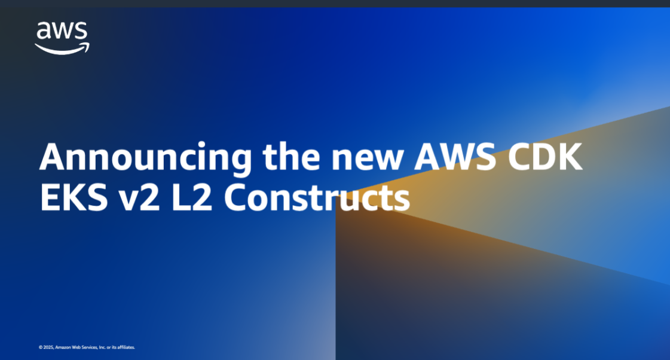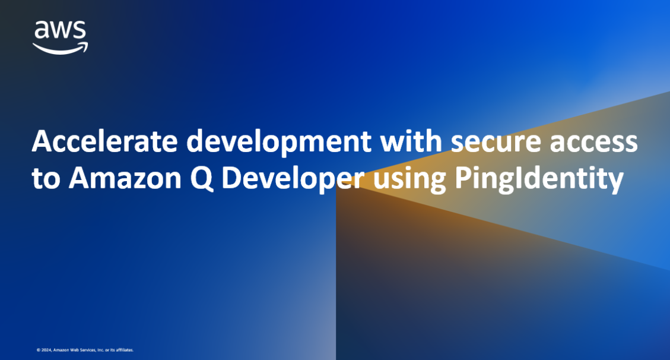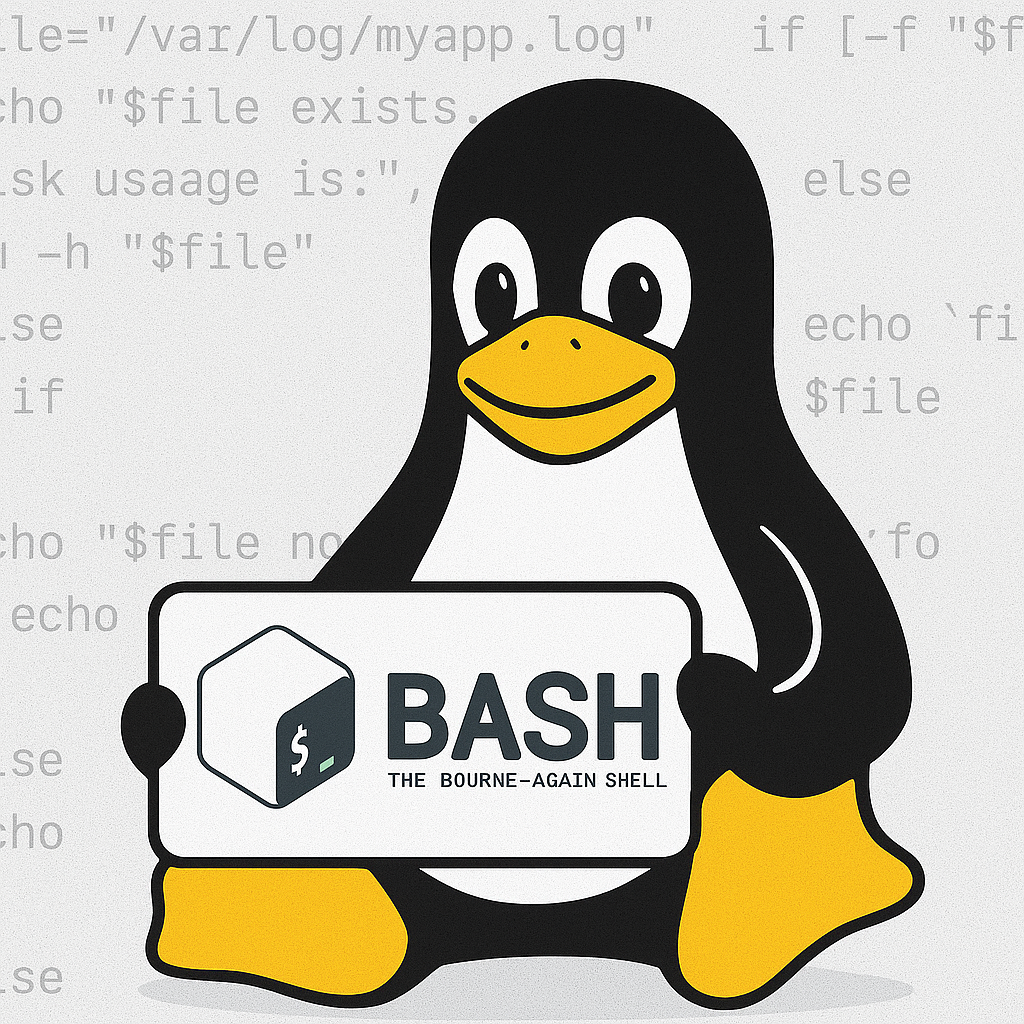Devops News
Amazon
187

Image Credit: Amazon
Announcing the new AWS CDK EKS v2 L2 Constructs
- AWS announced the release of aws-eks-v2 construct, a new alpha version of AWS Cloud Development Kit (CDK) L2 construct for Amazon EKS, introducing key architectural improvements for defining and managing EKS environments using infrastructure as code.
- The CDK enables defining cloud infrastructure using programming languages and deploying through AWS CloudFormation, offering constructs for varying levels of abstraction and control.
- The aws-eks-v2 construct enhances developer experience with native CloudFormation resources, Access Entry-based authentication, and improved architectural flexibility, allowing for reduced deployment overhead and simplified cluster access management.
- The alpha release requires experimental construct libraries for installation, and feedback is being actively gathered to enhance the construct before integration into the core CDK library.
- The construct provides easy ways to create EKS clusters with default configurations, Fargate workers, Auto Mode for intelligent compute capacity management, and Managed Node Groups for seamless EC2 instance management.
- Customizations post-cluster deployment, such as adjusting instance types and managing permissions through Access Entries, offer control and security in EKS infrastructure setup.
- The new aws-eks-v2 construct simplifies EKS cluster deployment and offers enhanced flexibility, performance, scalability, resource creation options, and operational efficiency.
- Improved features include native CloudFormation resource utilization, Access Entry authentication, flexible architectural patterns, optional kubectl Lambda handler, and automated node group management.
- The post encourages exploring the new EKS L2 construct through AWS CDK documentation and suggests submitting feature requests for further enhancements.
Read Full Article
11 Likes
Dev
105

Image Credit: Dev
The Dev-First Playbook to MCP: Build smarter AI interfaces and actually make money
- The AI revolution isn’t just about chat, it’s about getting things done.
- Model Context Protocol (MCP) unlocks AI capabilities to perform tasks like syncing Jira with Notion.
- MCP transforms AI agents from talkers to doers, opening up opportunities for early adopters to innovate.
- MCP serves as the interface for AI agents to interact with the real world through tools, resources, and prompts.
- Building an MCP server allows developers to connect AI agents with tools, resources, and prompts to perform tasks.
- Monetization opportunities exist by offering AI tools like CSV cleaners or price watchers through MCP.
- MCP presents early-stage app store potential for AI tools interacting with various APIs and data sources.
- Developers can build, deploy, and scale MCP tools either using Python-based FastMCP or Cloudflare Workers.
- Security measures, modularity, marketing strategies, and rapid iteration are essential for successful MCP tool development.
- MCP empowers developers to leverage AI to build AI tools efficiently and profitably for diverse real-world tasks.
Read Full Article
6 Likes
Amazon
325

Image Credit: Amazon
Accelerate development with secure access to Amazon Q Developer using PingIdentity
- Customers needing authentication for Amazon Q Developer often use PingIdentity via AWS IAM Identity Center to streamline access.
- Amazon Q Developer offers code assistance, vulnerability scanning, and tiered plans - Free and Pro with enterprise features.
- Setup involves configuring PingIdentity as an external IdP for IAM Identity Center to enable access to Amazon Q Developer.
- Steps include enabling AWS Single Sign-On in PingIdentity, connecting PingIdentity with IAM Identity Center, and configuring provisioning.
- Configuration settings, attribute mappings, and group provisioning are detailed for seamless integration between PingIdentity and IAM services.
- Testing involves providing PingIdentity credentials to access Amazon Q Developer via IAM Identity Center for code suggestions and enhancements.
- Clean-up steps are outlined to remove provisioned resources and subscriptions after testing the PingIdentity integration with Amazon Q Developer.
- The article guides users through setting up PingIdentity as an external IdP for AWS IAM Identity Center to access Amazon Q Developer and demonstrates code suggestions.
- The comprehensive walkthrough covers configuring AWS Single Sign-On, connecting PingIdentity, enabling provisioning, and setting access to Amazon Q Developer.
- The detailed steps include enabling advanced configurations, configuring user provisioning, group sync, and utilizing PingIdentity credentials for seamless access.
- The demonstration showcases the integration process from PingIdentity to IAM Identity Center for efficient access to AWS services like Amazon Q Developer.
Read Full Article
19 Likes
Dev
264

Image Credit: Dev
Azure DevOps Implementation Patterns That Actually Work
- Azure DevOps implementation patterns that actually work are based on experiences from delivering Azure certification courses.
- Key points include building a strong foundation, focusing on Infrastructure as Code, efficient CI/CD processes, effective monitoring, robust security practices, and fostering real team collaboration.
- Success factors in Azure DevOps involve smart pipeline design, environment standardization, meaningful quality gates, and effective artifact management.
- Adopting Infrastructure as Code, emphasizing version-controlled infrastructure, reusable templates, consistent environments, and change tracking are crucial.
- CI/CD success revolves around strategically automating critical paths, integrating tests smartly, implementing quality checks, and managing dependencies.
- Monitoring effectiveness can be achieved through observable systems, Application Insights integration, Log Analytics, Azure Monitor configuration, and actionable alerts.
- Security in Azure DevOps can be simplified with Azure Policy enforcement, Key Vault integration, identity management, and compliance automation.
- Real team collaboration is essential, including cross-team planning, shared responsibility models, effective knowledge sharing, and functional incident response.
- Future trends in Azure DevOps include growing AI integration, smarter automation, expanding platform engineering, and the standardization of cloud-native approaches.
- Interested individuals can explore certification courses like Azure Administrator (AZ-104) and Azure Solutions Architect (AZ-305) to master Azure DevOps.
- Readers are encouraged to share their Azure DevOps stories and discuss successful patterns and lessons learned.
- Overall, the article emphasizes practical strategies and proven methods for achieving success in Azure DevOps.
- Web story eligibility: true
Read Full Article
15 Likes
Discover more
- Programming News
- Software News
- Web Design
- Open Source News
- Databases
- Cloud News
- Product Management News
- Operating Systems News
- Agile Methodology News
- Computer Engineering
- Startup News
- Cryptocurrency News
- Technology News
- Blockchain News
- Data Science News
- AR News
- Apple News
- Cyber Security News
- Leadership News
- Gaming News
- Automobiles News
Dev
211

Image Credit: Dev
Azure Fundamentals: Microsoft.AppConfiguration
- Microsoft.AppConfiguration is a fully managed service in Azure for centralized application configuration and feature management.
- It helps developers handle dynamic configurations and feature flags in real-time to prevent downtime and reduce deployment-related outages.
- Companies like Walgreens and BMW have benefited from Azure AppConfiguration by cutting feature rollout time and enabling secure configuration sharing.
- AppConfiguration acts as a cloud-based control panel for applications, allowing centralized storage of settings in Azure for easy access by authorized apps.
- It solves core problems like the need for redeployment for config changes, secure management of secrets, and ensuring consistent settings across regions.
- Starbucks is an example of a company leveraging AppConfiguration for managing seasonal menu items and conducting A/B tests efficiently.
- Developers can benefit from feature flags for canary releases, while DevOps teams can use it for managing environment variables efficiently.
- Key features include feature flags for toggling functionalities in real-time, key-value storage for any configuration, and point-in-time snapshots for easy rollbacks.
- Practical use cases include multi-region deployment rollouts, and the service integrates well with ASP.NET Core Apps, Azure Key Vault, Event Grid, and Azure Functions.
- The service helps eliminate configuration sprawl, aids in zero-downtime feature rollouts, and saves time in typical DevOps workflows.
Read Full Article
12 Likes
Siliconangle
346

Image Credit: Siliconangle
Modernizing IT: How Nutanix Cloud Platform powers hybrid cloud simplicity
- The Nutanix Cloud Platform offers a hybrid cloud solution combining public cloud agility and on-premises control for enterprise needs.
- It enhances IT efficiency, resilience, and future-readiness while reducing costs and accelerating innovation.
- The platform provides virtual storage, compute, networking, security, cloud management, and governance in one stack.
- Nutanix Cloud Platform simplifies operations and modernizes IT environments through centralized management and automation of routine tasks.
- It supports external storage like Pure Storage Inc., with a zero-touch framework for automated deployment and configuration enforcement.
- The Nutanix Kubernetes Platform bridges traditional infrastructure and cloud-native requirements with simplicity, security, and scalability.
- It eliminates operational complexities associated with Kubernetes and focuses on data-centric solutions.
- Hyperconverged infrastructure is a key product differentiator, integrating compute, storage, networking, and virtualization into a software-defined platform.
- Nutanix prioritizes application management to simplify deployment, protection, and movement of applications for virtual machines and containers.
Read Full Article
20 Likes
Dev
12

Image Credit: Dev
Azure Fundamentals: Microsoft.AnalysisServices
- Microsoft.AnalysisServices is Azure’s managed analytical engine for high-performance BI and data modeling in the cloud, supporting real-time insights and interactive dashboards.
- Businesses shifting to cloud-native analytics benefit from elastic scalability, hybrid cloud compatibility, and AI-driven insights.
- Key users include Data Engineers, BI Developers, Business Analysts, and DevOps Teams.
- Microsoft.AnalysisServices offers in-memory processing, DAX for complex calculations, and serverless scaling to address slow queries and high infrastructure costs.
- Real-world examples include Netflix for viewer engagement analysis and Walgreens for inventory forecasting.
- Industry-specific motivations range from healthcare (patient analysis) to finance (fraud detection) and retail (dynamic pricing).
- Features like in-memory storage and DAX language boost query speed and data analysis capabilities.
- Practical use cases cover real-time inventory dashboards and detailed architecture for seamless integration.
- Hands-on tutorials, pricing details, security measures, and comparisons with alternatives provide comprehensive insights.
- Best practices include automating refreshes, monitoring performance, and ensuring data security and compliance.
- Overall, Microsoft.AnalysisServices offers an advanced analytics solution with pros like fast queries and Power BI integration, balanced with cons such as scalability costs and DAX learning curves.
Read Full Article
Like
Medium
81

Image Credit: Medium
From Bash to Brilliance: Your First Scripts That Actually Do Something Useful
- Real-world example of a file integrity check script that can be run hourly via cron for critical logs, application monitoring, and file corruption detection.
- Automating disk space check to prevent system performance issues due to low disk space and avoid failures in backups or deployments.
- Script for automating system patching on Linux distributions, ensuring the system stays updated without manual intervention.
- Pair update scripts with log writers and alerting strategies for efficient system maintenance.
- Configuring automatic notifications for system status using scripts and triggering alerts for system monitoring.
- Cron and Bash combination for fundamental automation, enabling scheduling of scripts for various repetitive tasks on Linux systems.
- Scripts provided are not just scripts but building blocks introducing core automation concepts for managing Linux systems effectively.
- Linux automation focuses on systems thinking rather than individual commands, beneficial for managing home labs, VPS, or production servers.
Read Full Article
4 Likes
Dev
199

Image Credit: Dev
GCP Fundamentals: API Discovery Service
- API Discovery Service by Google Cloud is a tool that automatically catalogs and organizes APIs in a GCP environment, solving security, operational, and governance challenges.
- Companies like Spotify and PayPal leverage GCP's API tools for compliance audits, detecting unauthorized deployments, and streamlining developer onboarding.
- The service automatically detects APIs, catalogs metadata, and provides a centralized registry for governance, with components like Discovery API, Inventory Feed, and IAM Integration.
- Evolution of API Discovery Service includes features like AI-powered anomaly detection added in 2023, making it a comprehensive solution.
- Real-world examples demonstrate how API Discovery Service helps in discovering shadow APIs, managing microservice sprawl, and ensuring compliance, like in a Healthcare SaaS case study.
- Key features and capabilities include automatic schema extraction, real-time monitoring, multi-cloud support, and much more, enabling efficient API management.
- Use cases like securing serverless APIs in a media company showcase practical applications of API Discovery Service in different scenarios.
- Integration points include IAM roles, VPC SC for ensuring compliance with perimeter controls, making it a versatile tool in cloud ecosystems.
- API Discovery Service is recommended for enterprises managing numerous APIs, enabling governance, reducing risks, and lowering operational overhead.
Read Full Article
12 Likes
Dev
24

Image Credit: Dev
Azure Fundamentals: Microsoft.ADHybridHealthService Registered By Default
- Microsoft.ADHybridHealthService (Azure AD Connect Health) is a crucial service for monitoring and troubleshooting hybrid identity issues between on-premises and Azure AD.
- The service ensures real-time monitoring of synchronization errors, alerts for authentication bottlenecks, and insights into AD FS performance.
- It has helped companies like Contoso Ltd. reduce identity-related outages significantly by catching synchronization failures early.
- Microsoft.ADHybridHealthService plays a vital role in supporting cloud-native apps, zero-trust architectures, and seamless migrations in modern enterprises.
- It functions as a 'fitness tracker' for hybrid identity setups, tracking sync errors, authentication server performance, and security risks.
- The service addresses issues like login failures post-password change, overloaded AD FS servers, and dormant accounts vulnerable to attacks.
- Key components include lightweight agents on AD Connect and AD FS servers, Azure Portal dashboard, and proactive alerting engine.
- Industries such as healthcare, finance, and education benefit from the service by ensuring compliance, fraud detection, and scaling capabilities.
- Top features include sync error analytics, AD FS performance monitoring, and custom alert rules to address specific monitoring needs.
- The service enables proactive troubleshooting, eliminates manual log parsing, and closes security gaps caused by orphaned accounts or sync failures.
- Microsoft.ADHybridHealthService empowers IT teams to address issues efficiently and improve overall security while ensuring consistent hybrid identity operations.
Read Full Article
1 Like
Dev
314

Image Credit: Dev
GCP Fundamentals: AI Platform Training & Prediction API
- Google Cloud's AI Platform Training & Prediction API is a managed service simplifying the machine learning lifecycle.
- Enterprises are shifting ML workloads to the cloud for scalability and cost efficiency.
- GCP's AI services integrate with other cloud providers and prioritize sustainability.
- Real-world success stories include Spotify for music recommendations and HSBC for fraud detection.
- The AI Platform Training & Prediction API offers scalable ML model training and real-time prediction serving.
- Core components include Training Service, Prediction Service, and Model Registry.
- The API evolved to support TensorFlow 2.x and custom containers by 2022.
- Benefits include reduced DevOps tasks for developers and faster time-to-market for businesses.
- Use cases range from retail demand forecasting to fraud detection in banking.
- Key features include distributed training, AutoML integration, custom containers, and versioned model deployment.
- Practical use cases exhibit low-latency predictions and seamless ecosystem integration.
- Pricing details encompass training costs and prediction expenses.
- Security measures involve using service accounts and enabling VPC Service Controls.
- Integration with other GCP services like BigQuery and Cloud Functions is seamless.
- Pros of the API include fully managed infrastructure and TensorFlow integration, with the cons being a steep learning curve for beginners.
- Best practices include monitoring jobs and setting alerts for failed processes.
- In conclusion, the AI Platform Training & Prediction API simplifies AI infrastructure, making scalable ML accessible to all.
Read Full Article
18 Likes
Hackernoon
4

Image Credit: Hackernoon
Why Traditional Monitoring is Falling Behind And What’s Taking Its Place
- Traditional monitoring tools are struggling to keep up with the complexity, speed, and unpredictability of modern cloud-native infrastructure, including containers and microservices.
- The reliance on metrics and logs in the old monitoring stack is losing ground as modern environments involve ephemeral components that evade traditional monitoring mechanisms.
- An abundance of metrics can lead to data overload rather than clarity, causing alert fatigue and hampering effective incident response.
- Outdated monitoring systems not only fail to provide actionable insights but also contribute to engineer burnout by generating excessive, often irrelevant alerts.
- The shift towards cloud-native architecture introduces challenges as legacy monitoring tools struggle to adapt to the dynamic, auto-scaling, and distributed nature of modern systems.
- API discovery becomes crucial in monitoring modern infrastructure, especially in microservices environments where services are transient and expose ever-changing endpoints.
- eBPF technology offers observability at the kernel layer, enabling real-time insights into system behavior without intrusive instrumentation or reliance on application logs.
- Modern observability includes leveraging tools like OpenTelemetry and eBPF to achieve comprehensive visibility from application-level tracing to kernel-level monitoring.
- Combining observability with intelligent enforcement mechanisms, such as Kubernetes Network Policies, allows teams to not just observe but also control and react to incidents effectively.
- Teams are shifting towards real-time, efficient observability strategies that focus on proactive incident response, kernel-level insights, and filtering noise to extract meaningful data.
- To enhance observability in fast-moving environments, teams are advised to start small, incorporate kernel-level visibility, adopt OpenTelemetry, link observability with enforcement mechanisms, and prioritize data efficiency.
Read Full Article
Like
Dev
114

Image Credit: Dev
From Trust Anchors to SPIFFE IDs: Understanding Linkerd’s Automated Identity Pipeline
- Linkerd enables mTLS for TCP traffic among meshed pods by utilizing Root Trust Anchor and Identity Intermediate Issuer certificates.
- The Root Trust Anchor acts as the ultimate trust point and signs intermediate CA certificates, ensuring mesh-wide trust without exposing the root key.
- Linkerd's Root Trust Anchor certificate is stored in a ConfigMap, providing the public key for all intermediates and end-entity certificates.
- New Linkerd proxies receive the Root Trust Anchor certificate during injection, helping bootstrap trust and secure communication.
- The proxy initializes by loading the trust-anchor certificate, generating a key pair, creating a CSR with the proxy's identity, and starting the Rust identity client.
- The identity client obtains the ServiceAccount JWT, Root Trust Anchor cert, private key, and CSR to issue a unique Leaf Certificate for the proxy's SPIFFE ID.
- The Identity Intermediate Issuer Certificate, located in the linkerd-identity-issuer secret, validates ServiceAccount tokens and issues certificates with SPIFFE URIs.
- The Identity service constructs x509.Certificate templates based on the CSR, signs certificates, and returns them to the proxy for mTLS.
- The proxy consumes the received certificate for mTLS, automatically renewing it when necessary by generating new CSRs for rotation.
- The flow involves trust anchor setup, certificate generation, proxy identity validation, and automated rotation to maintain secure communication within the Linkerd service mesh.
Read Full Article
6 Likes
Dev
323

Image Credit: Dev
Automating AWS Infrastructure Provisioning with CodePipeline and CloudFormation Nested Stacks
- The article discusses automating AWS infrastructure provisioning using CodePipeline and CloudFormation nested stacks for a GitOps-style deployment.
- AWS CodePipeline automates build, test, and deployment phases, integrating with CodeBuild, CloudFormation, CodeStar Connections, and GitHub.
- The architecture includes development, staging, and production environments, one Git repo, and CloudFormation nested stacks for modularity.
- Creation of prerequisite components like GitHubConnection, PipelineArtifactStoreS3Bucket, CodeBuildServiceRole, etc., is detailed using CloudFormation.
- The process involves creating, linting, and deploying CloudFormation stacks through CodePipeline, ensuring syntactic correctness and automated deployments.
- Steps for authorizing GitHub in CodeStar Connection and watching the pipeline run, including linting and infrastructure provisioning, are provided.
- The guide covers making and deploying changes, cleanup steps for stack deletion, and concludes by highlighting the advantages of this automated pipeline.
- The setup enhances deployment consistency, integrates well with developer workflows, and simplifies infrastructure provisioning through automation.
- GitHub repo reference and GitOps environment modeling information are included for further exploration and understanding.
Read Full Article
19 Likes
Dev
13

Image Credit: Dev
Optimizing IT Operations: Dedicated Storage for Testing and Training
- Azure Storage is a core offering from Microsoft Azure, providing a powerful cloud storage solution for all types of data.
- Key components of Azure Storage include Blob Storage, File Storage, Queue Storage, Table Storage, and Disk Storage, each serving different data storage needs.
- Azure Data Lake Storage is specialized for big data analytics, offering hierarchical namespace and optimizations for large analytical workloads.
- Azure Storage integrates seamlessly with other Azure services and offers features like encryption, redundancy options, and access control for data security.
- Setting up Azure Storage for testing and training involves creating a resource group, deploying a storage account, and implementing security measures.
- Steps include logging into Azure Portal, creating a resource group, deploying a storage account with specific configurations, and ensuring secure connections.
- Configuring Azure Storage for testing and training provides a secure, scalable, and cost-effective foundation for cloud learning.
- By selecting Locally Redundant Storage (LRS), a balance between affordability and durability is achieved, ideal for non-production workloads.
- Security measures include enabling secure transfer, enforcing TLS 1.2, and disabling shared key access for compliance and access control.
- The setup serves as a learning environment for professionals to build expertise in Azure, DevOps, and cloud infrastructure best practices.
- This tutorial demonstrates strategic deployment of Azure Storage to support operational readiness and long-term cloud proficiency.
Read Full Article
Like
For uninterrupted reading, download the app